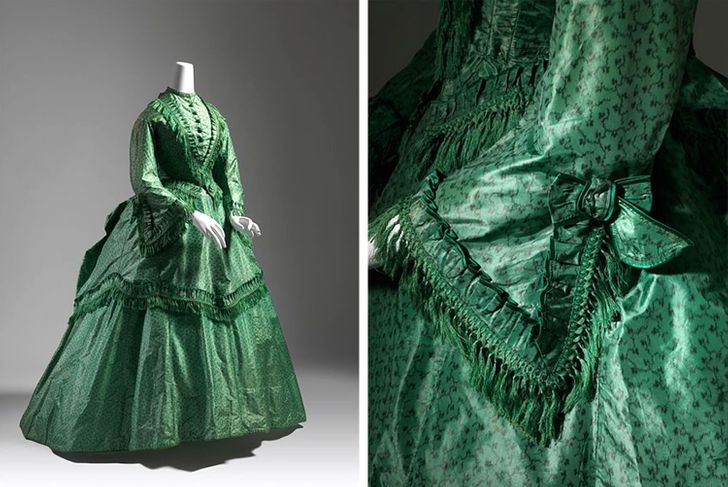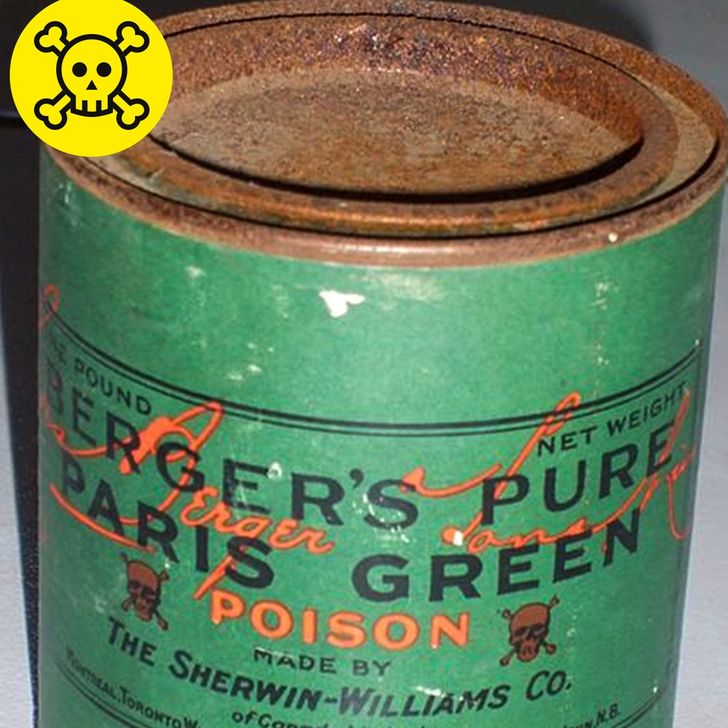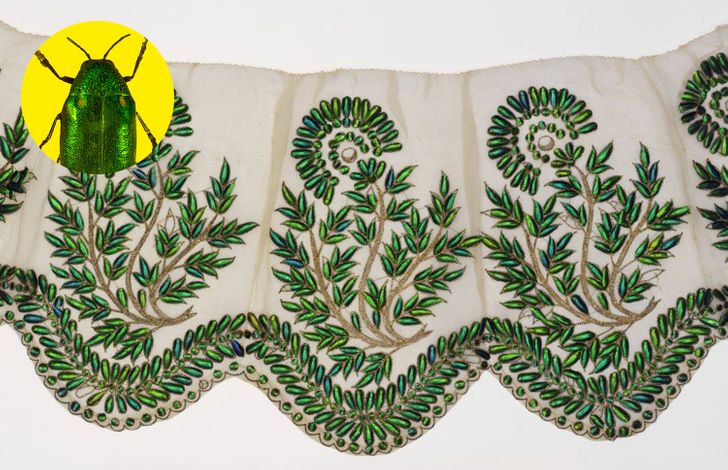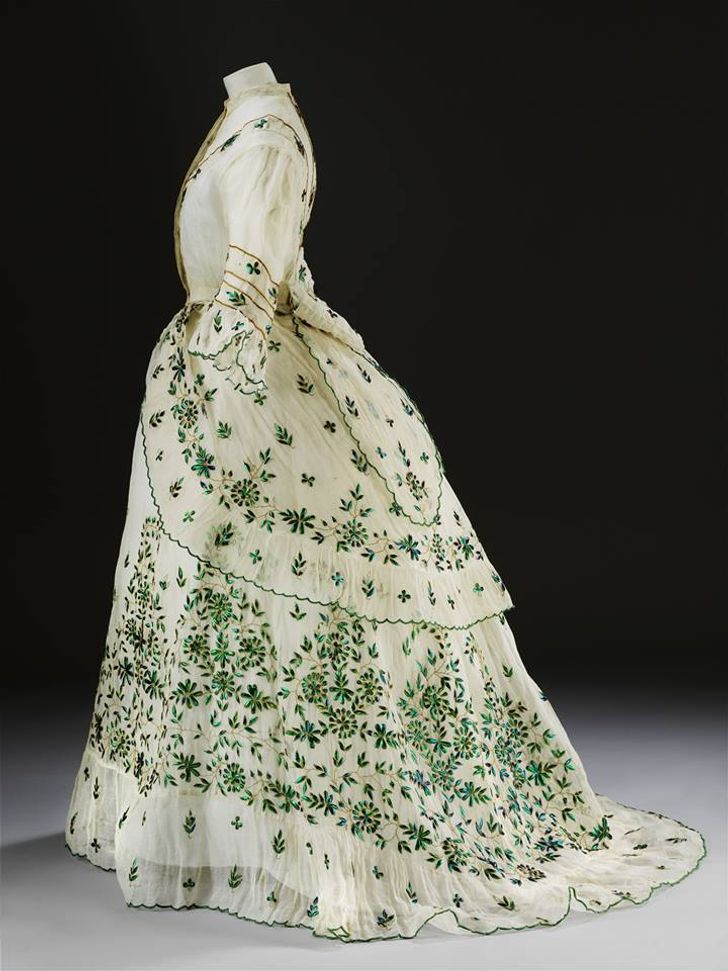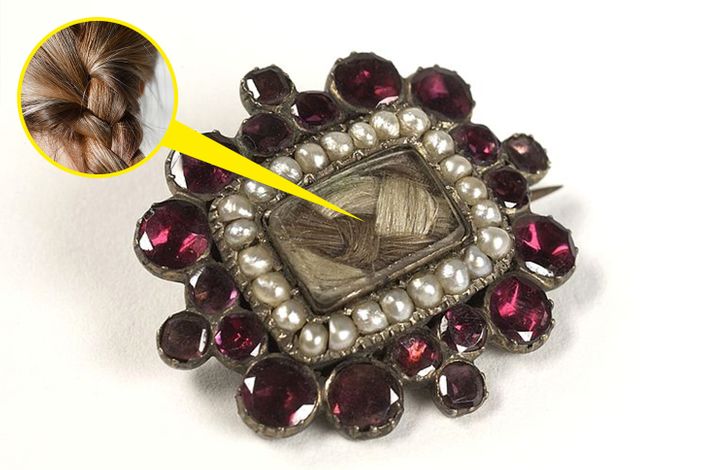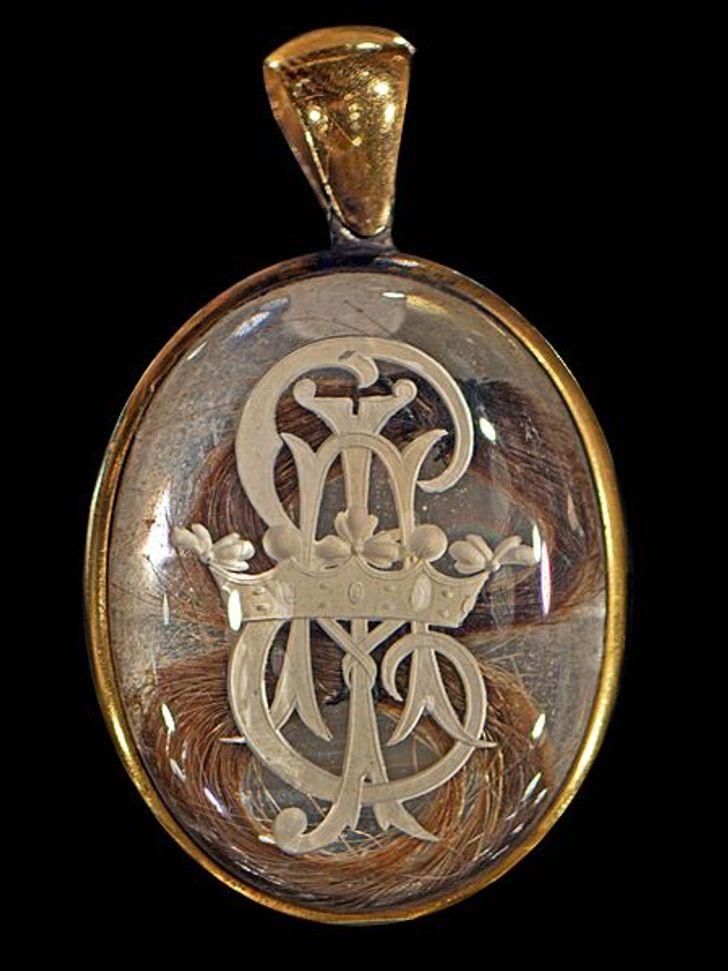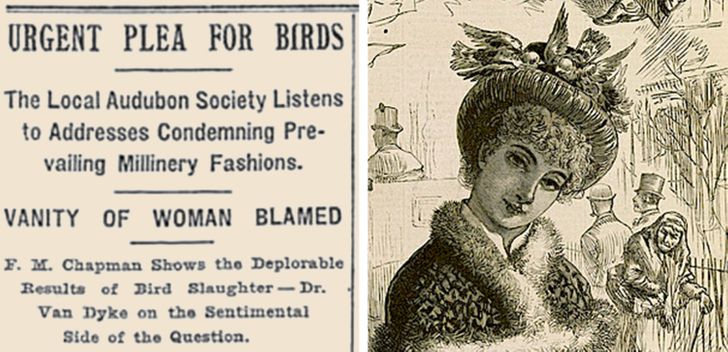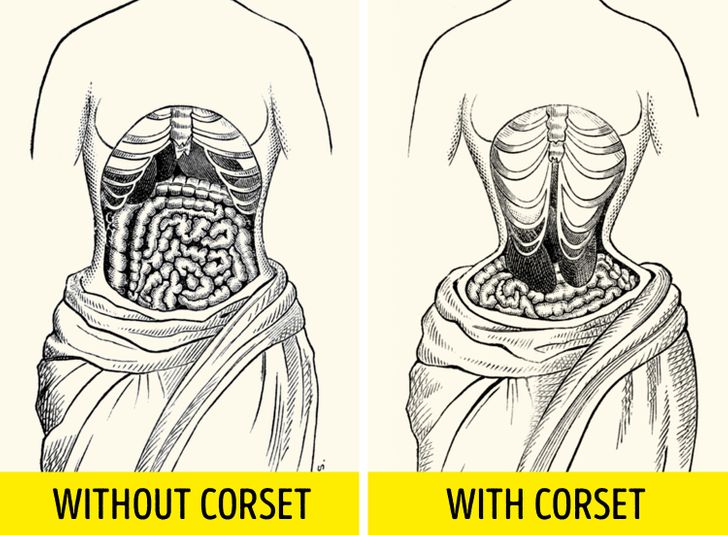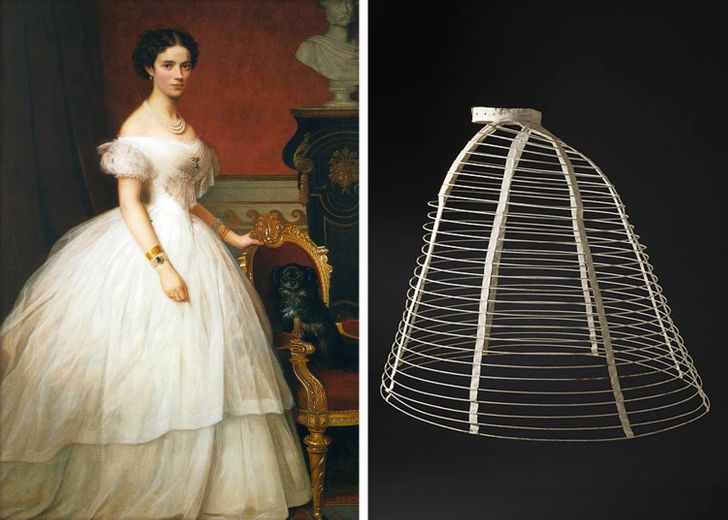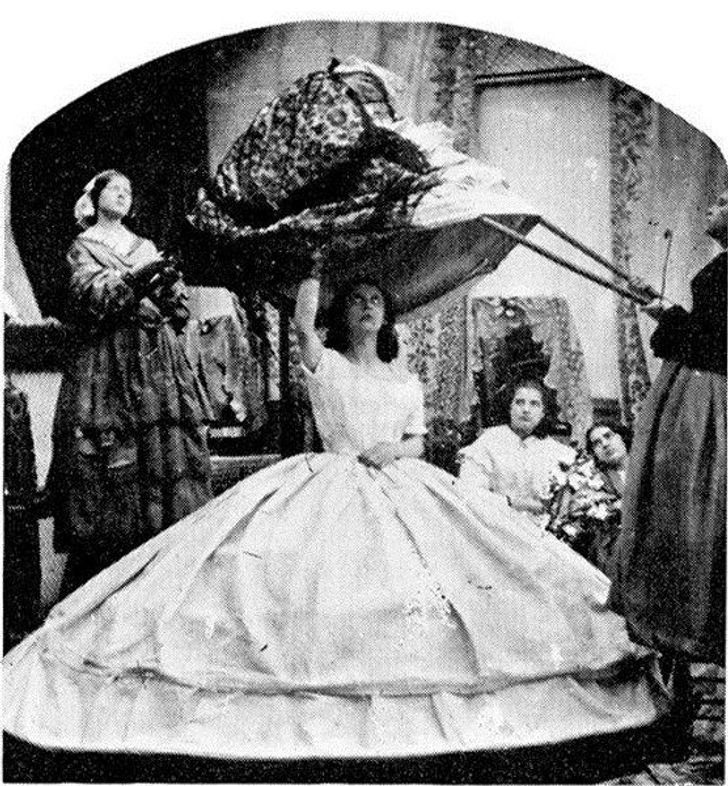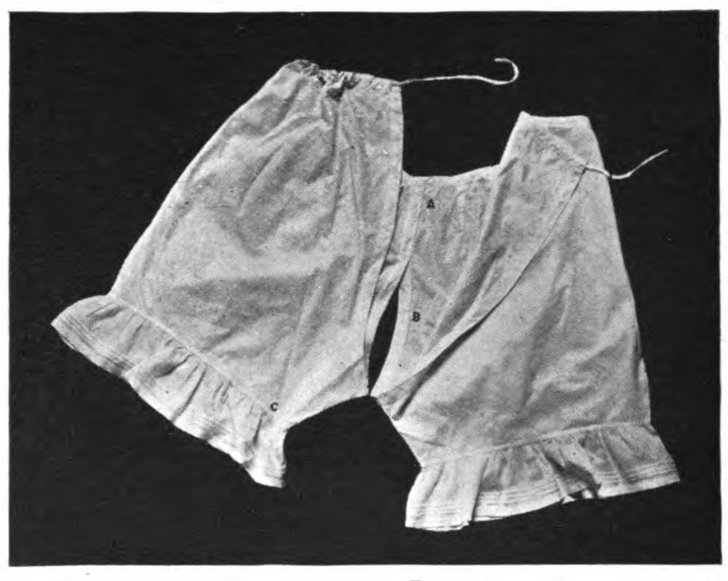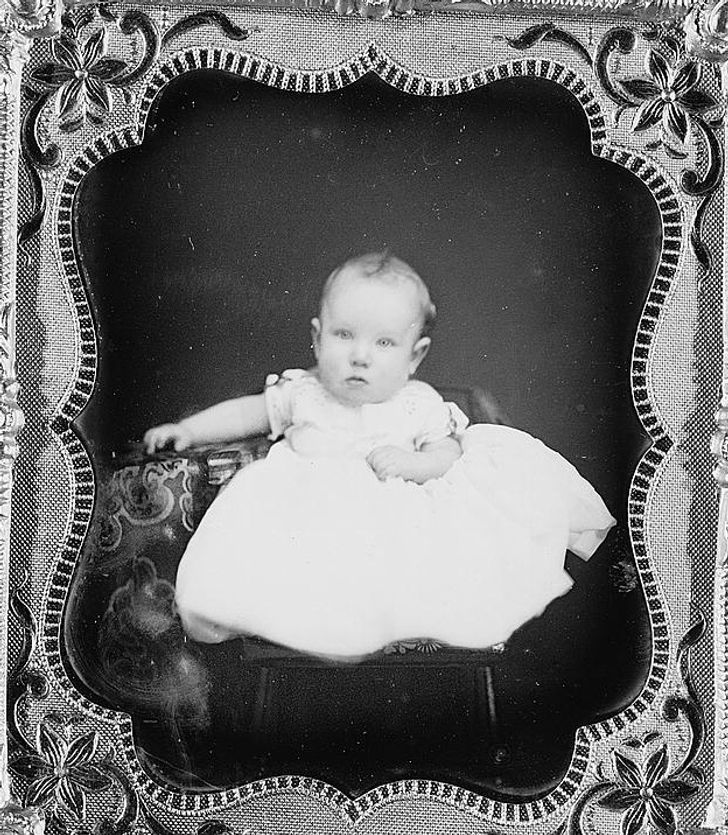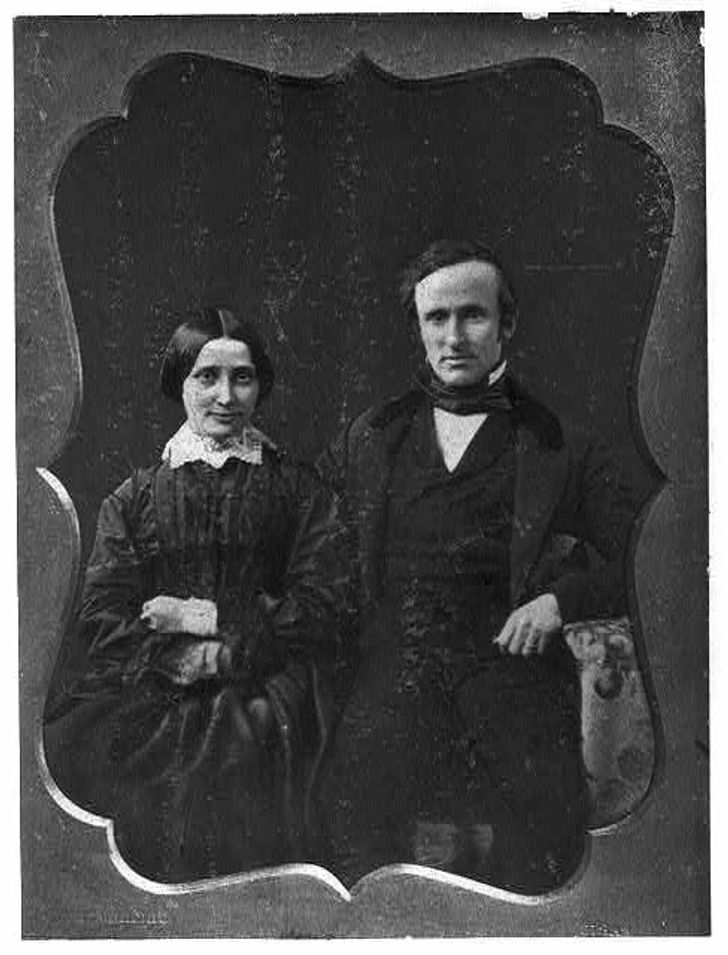I'm pretty sure when our kids start looking at our photos where we wear jeans wth those huge holes, they will laugh so hard ?
9 Puzzling Fashion Trends From the Victorian Era That Earn It the Title of the Most Startling Period
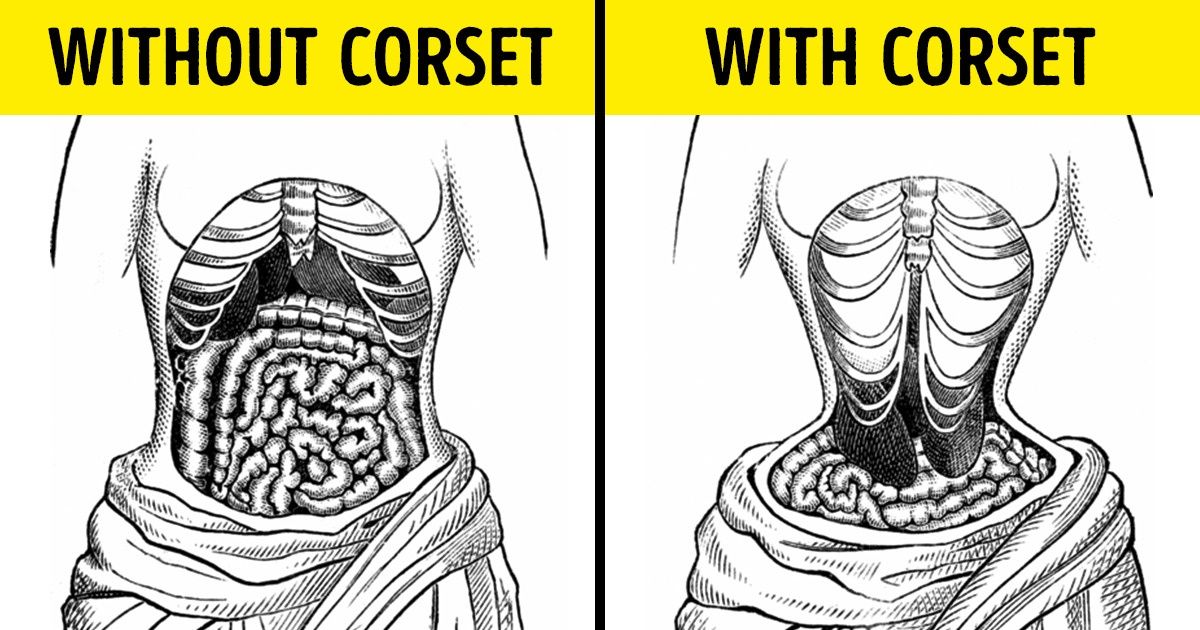
From extremely tight corsets to poisoned dresses, many strange things belonged to the Victorian era. Perhaps it was the historical context filled with war, epidemics, and strict social norms that made Victorian tastes so bizarre. Whatever the reason, these things influenced fashion, and the results have never ceased to surprise us, even today.
1. They used a deadly pigment that contained arsenic to dye fabrics.
The blend was called Paris Green, and they also used it as a pigment to produce paint for walls. Victorians knew that numerous people who came into contact with arsenic died, but, for some reason, it took them a long time to make the connection between the chemical and the tragedies.
It was a shade of green that looked stunning on dresses, but when it came in contact with water, it released a chemical that was deadly for people.
2. They decorated their dresses with insects.
At first, it sounds quite grotesque, but it’s possible that the vibrant color, brightness, and sparkle of the wings attracted so much attention from the Victorians that they decided to use them as sequins to sew on their dresses and embellish them. If we didn’t know they were beetle wings, we would probably just see them as a beautiful detail.
3. Accessories made out of hair
It was considered a type of accessory that was generally worn by people who were mourning the death of a relative. But ordinary people also liked these kinds of accessories and began to wear them. They sent the message that they had someone to love, like a husband, or someone they wanted to remember, like a son who had just left for the war.
Victorians left us with some bracelets made out of braids of human hair, bags or purses also made out of hair, and locks of hair secured inside glass medallions.
4. Little stuffed birds on hats
This is perhaps the most tragic fad, and it consists of placing many feathers and even stuffed birds on hats. The demand for these types of ornaments increased so much that the bird population began to decline. Fortunately, it did not last for many years, because movements by the Audubon Society, in Harper’s Bazaar magazine, arose to protect birds. Many were led by women who tried to stop the problem, a kind of Victorian PETA.
5. Corsets so tight that they changed women’s anatomy
Although they didn’t cause deaths or as many faintings as previously believed, corsets are other wardrobe pieces whose effects are extreme. Their corsets were tightened to such a degree that they limited a woman’s breathing a little and caused muscle atrophy because they didn’t allow movement of the compromised muscles. What’s more, they altered the shape of the chest bones and the organic arrangement of the organs. The interior of a nineteenth-century woman didn’t look like that of a modern woman.
Fortunately, this didn’t make them more prone to disease or accelerate their deaths. The image above shows how doctors believed that the body was deformed and, although the changes were not as drastic as they thought, it was still a practice that produced an unusual effect on the body.
6. Wide skirts that wreaked havoc everywhere they went
After the typical dresses that had a slim silhouette, like the ones from Jane Austen films, skirts began to expand in diameter in the following decades of the nineteenth century. They expanded so much that even multiple layers of skirts didn’t achieve the desired width. This was the time when a piece called a crinoline entered the scene. It was a kind of “cage” made out of rings of steel connected by a rope, which gave shape and a wide volume to a dress.
The device also allowed women more mobility, but only around the legs and only in theory, because the skirts became so exaggeratedly wide that, in some cases, passing through a door or trying to get into a carriage could carry the risk of getting stuck in the process. There are even some photographs, like the one above, that mocked the excessive size of the dresses.
7. Underwear with holes
But you might have thought differently in the Victorian era. The dressing ritual of a woman took a long time. She wore layers and layers of skirts over her metal crinoline, so if she wanted to relieve herself, it would’ve been a real pain if it wasn’t for her underwear, which already had a hole.
8. All children wore dresses until the age of 4, no matter whether they were boys or girls.
From birth to school age, for approximately 4 years, children wore dresses with fullness and lace. The more lace and fullness the clothes had, the richer the family of the baby or child. It was a custom to show off wealth through the clothes of the children. Regardless of whether they were boys or girls, all kids wore dresses, which can seem somewhat strange today, since children tend to dress in a more infantile and personalized way.
9. The widespread mourning fashion
The life expectancy of the middle class during the Victorian era was about 45 years old. Death wandered through the cities trapped between wars and epidemics, like cholera, tuberculosis, syphilis, and smallpox. It wasn’t unusual for a person to be in mourning on several occasions in their life each time they’d lose a relative. Many women would wear black for years, so Victorians designed a type of mourning fashion.
Middle-class women typically didn’t have the means to buy a black dress as soon as a relative passed away, so they’d dye some of the garments they already owned. The buttons also had to be black, as well as the jewelry, and, if they could afford them, they’d carry black pearls or jet stones. The jewels that didn’t need to be black were those made with the hair of the deceased. There was strict etiquette concerning mourning, so even if a woman wanted to get married but was in mourning, her wedding dress had to be black, like the bride above, however dismal this may seem today.
Comments
Related Reads
20 Absurd Signs Giving You an Extra Opportunity to Laugh

6 Things That Are Luckily Vanishing in the Modern World
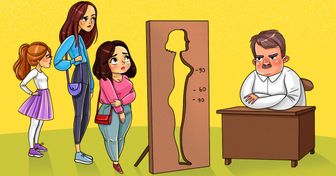
9 Celebrities Who Dated Both Men and Women
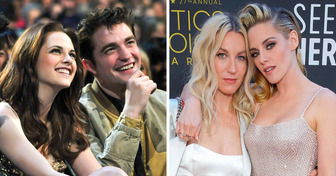
14 Photos That Seem Ordinary Until You Look at the Background
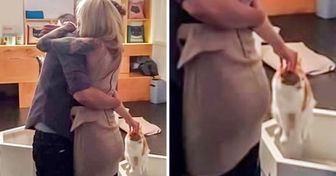
Pamela Anderson, 55, Hailed “Most Beautiful Woman in the World” as She Dons Iconic Swimsuit

12 Single Dads Share Their Most Emotional Stories
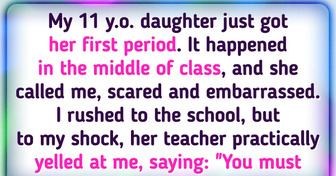
My Ex Put His New Family Over Our Son, So I Served Him the Sweetest Revenge

18 Stories That Prove a Cleaner’s Job Is About More Than Just Dusting

I Absolutely Refuse to Tolerate My DIL’s Laziness, My Son Deserves a Wife, Not a Freeloader

15 Fitting Room Stories That Can Make You See Shopping in a Whole New Light
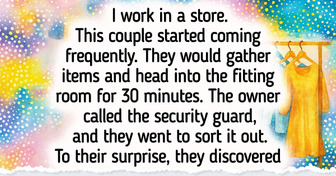
My Husband Made Me Care for His Sick Mother, So I Served a Payback He Won’t Forget

10 Parents Whose Quiet Kindness Spoke Louder Than Words

